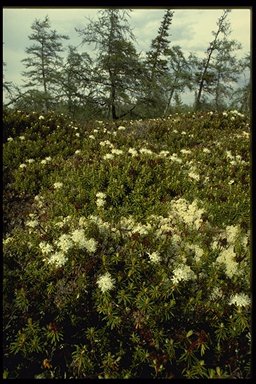
SPINDLY SPRUCE, ROCK AND ROARING RIVERS
The earth was created the way it was by the creator, and changing it is unnatural
and wrong. The land and the rivers where the Cree people hunt and fish are a
garden, a gift from the Creator...it has to be treated with love and respect to
ensure that its spirit lives forever.
John Petagumskum, Cree Elder, 1990.

THE LAND:
An endless patchwork of interconnected lakes, rivers full of rapids and falls, bogs, swamps, spruce forests and treeless barrens - this is an elemental land, split between water and bedrock, softened by a thin veneer of spruce forest and muskeg. Many large rivers drain westward into Hudson and James bays, dropping in a series of steps over terraces marking ancient sea levels. Large lakes cover much of the region. The topography is gentle and undulating, broken occasionally by hills.

VEGETATION:
The term "boreal" in the name of this region implies that the boreal forest ecosystem is a dominant feature. But actually the vegetation of the region is a south to north transition from dense spruce forests to muskeg. Fire occurs frequently and is a major influence on vegetation.
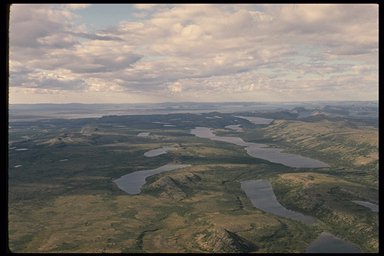
Black spruce is the dominant tree species. Closed crown forests are restricted to lowlands around lakes and along rivers. Most of the land is covered by a drunken chequerboard pattern of open black spruce woodland, low shrubs, open muskeg and string bogs. As one moves towards the north of the region, the spruce become progressively more stunted and the stands more open. Shrubs such as dwarf birch, willow and Labrador tea cover a greater percentage of the land. Extensive poorly drained areas cover much of the region, with open wet black spruce woodlands, muskeg and string bogs stretching endlessly. From the air, string bogs appear as a series of sinuous light strips, like cooked spaghetti, floating across dark areas of open water. The "strings" are actually ridges of sphagnum moss growing on accumulations of peat. String bogs form on very gradual slopes, with the "strings" stretched across the bog at right angles to the slope.
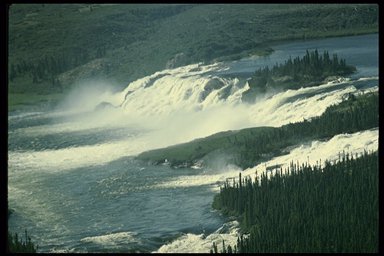
WILDLIFE:
Characteristic wildlife include caribou, moose, black bear, red fox, arctic fox, snowshoe hare, spruce grouse, wolf, coyote, beaver, mink, lynx, and marten, among other typical wildlife of northern regions. Waterfowl, particularly tundra swans, snow geese and Canada geese, congregate along the shores of James Bay and Hudson Bay each fall to feed. Belugas, bearded seals and harbour seals feed in the fertile waters offshore. Seals inhabit two inland lakes in the region, Lac-des-Loups-Marins and Petit-Lac-des-Loups-Marins, both of which are proposed ecological reserves. Whether these fresh-water seals are a separate species is under study.
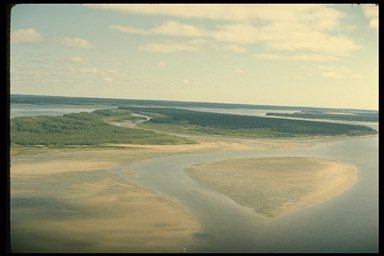
STATUS OF NATIONAL PARKS:
No national parks exist yet in this region. The Lac Guillaume-Delisle area has been identified as the preferred location for a possible national park. Lac Guillaume-Delisle itself, once known as Richmond Gulf, is a vast brackish estuary linked to Hudson Bay by a narrow corridor. Outstanding features of this area include spectacular shoreline cliffs and the twin craters filled by Lac a l'Eau Claire (Clearwater Lake), the second largest natural lake in Quebec. The two adjoining craters are believed to be the remains of an ancient volcano or the result of a meteorite that split before hitting the earth. The Eau Claire River connecting the lake of the same name to Lac Guillaume-Delisle is a chain of cascades and falls of remarkable beauty. The tree line passes through the proposed park area.
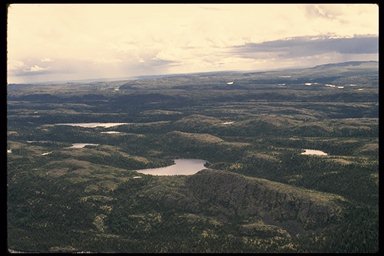
In 1989 the mayor of Umiujaq, a community on Hudson Bay, asked Parks Canada to consider the possibility of establishing a national park in the Lac Guillaume-Delisle area. Lac Guillaume-Delisle lies within the area covered by the James Bay and Northern Quebec Agreements (1975-1980). Some initial discussions have taken place, but a park proposal has yet to be developed.
Hydro-Québec has in the past proposed to develop La Grande Riviere de la Baleine, a major watershed just to the south of the Lac Guillaume-Delisle area, for hydro-electric power. These plans have been put on hold. In any case, it appears that the drainage basin of the Lac Guillaume-Delisle area would not be directly affected by such a hydroelectric development project.
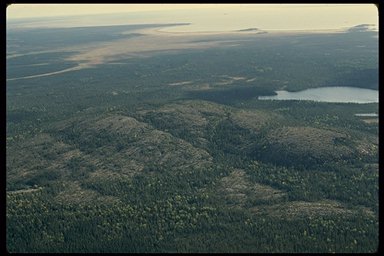
The establishment of a new national park in the Lac Guillaume-Delisle area will require the concurrence of the Government of Quebec, the people of Umiujaq and Makavik Corporation.
The following table summarizes the status of system planning for each step toward establishing a new national park in this natural region.
| Steps in the Park Establishment Process. | Status |
| Representative Natural Areas Identified: | done |
| Potential Park Area Selected: | done |
| Park Feasibility Assessed: | 0 |
| Park Agreement Signed: | 0 |
| Scheduled Under the National Parks Act : | 0 |